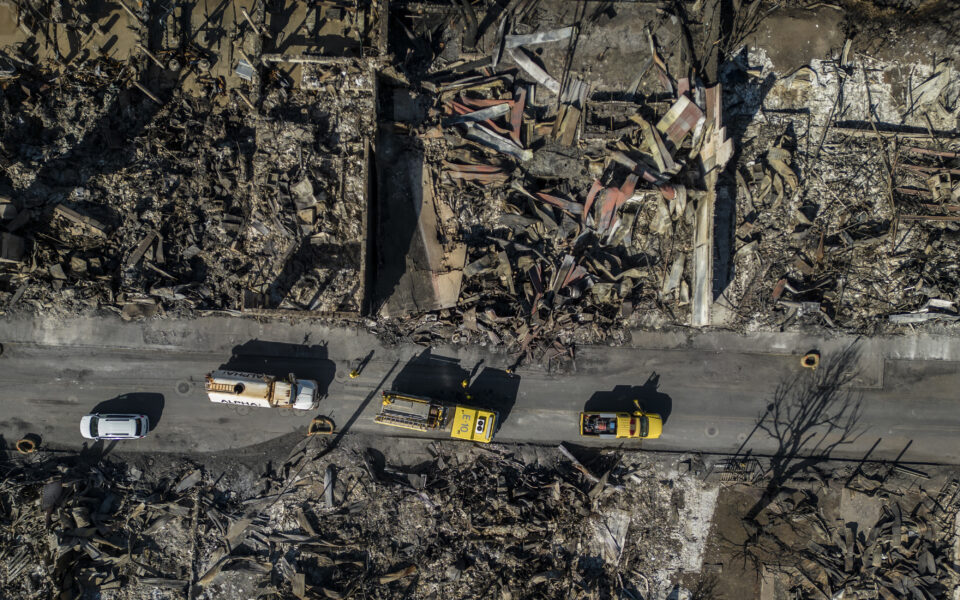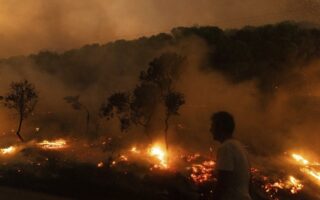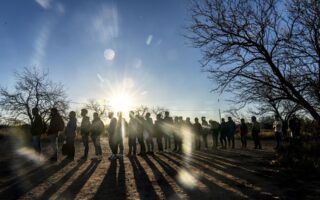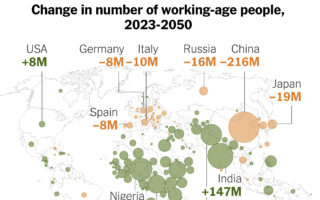9 key revelations in Maui’s first review of the Lahaina inferno

Six months after a firestorm destroyed the town of Lahaina, Hawaii, a detailed new report on the tragedy reveals that a large number of victims died along a single street – a stark indication of the ferocity of the blaze that swept through the historic island town, killing 100 people.
The 98-page report from the Maui Police Department on the August 8 disaster came after months of pressure to provide more information about the fire and the government’s response to it, which has been criticized for failing to adequately warn residents in time for them to evacuate.
It provides a detailed timeline of a fire that started near a downed electrical line in the morning hours, then flared up in the afternoon and burned through the city for hours. As residents fled for their lives, many were unable to leave because key exit routes were blocked by downed power lines, trees and the raging fire itself.
The fire claimed victims across a distance of more than 2 miles, and possibly over many hours, the report showed, including in neighborhoods that were ablaze before evacuation alerts were issued.
Here are nine key revelations from the report.
Many deaths on one street
Some of the fire’s victims were found in the north part of the town, and another cluster was discovered to the south, according to maps produced by Maui county.
But the majority were in the city center. About one-third of them were found along Kuhua Street, a short road lined with residences on one side, about a half-mile from the shore. That street has a dead end to the west, and survivors have described how they struggled to escape to the east because a downed tree was blocking the roadway.
Among the deaths along Kuhua Street was the fire’s youngest victim, 7-year-old Tony Takafua, who died with several family members. Many others also died on neighboring residential streets, as those who had little warning about the blaze struggled to escape amid thick smoke and flying embers.
The report also revealed that fewer than half of the victims – 42 in all – were found inside buildings, while 39 were found outside. Fifteen others were found in vehicles, and one in the ocean. Three more people were taken to a hospital before being pronounced dead.
A delayed evacuation order
A detailed timeline of events describes a series of calls to emergency dispatchers, reporting a fast-spreading fire at 2.55 p.m. Officers soon began evacuating neighboring areas, the report said.
But it does not explore the county’s delay before issuing a broader evacuation alert. The county made a decision not to use its all-hazards siren system and waited until 4.16 p.m. to send a cellphone evacuation alert. That alert was targeted at residential neighborhoods above the Honoapiʻilani Highway.
Fire had already consumed much of the area targeted for evacuation. At the exact time the evacuation alerts were going out, the new timeline shows, officers were reporting that the fire had spread all the way down to the highway and was jumping the road – toward waterfront areas that never received an evacuation alert.
Inside the Emergency Operations Center
The after-action report found that the Maui Emergency Management Agency “fully activated” its emergency operations center at 5.50 p.m., about three hours after the fire had started its rapid spread. By that time, the fire had moved more than a mile through town; many buildings on celebrated Front Street were engulfed in flames.
The report did not explore why the operations center waited so long to fully activate. It had been partially activated the day before, when weather forecasters warned of the likelihood of very high winds. The head of the emergency management agency, Herman Andaya, was away from Maui attending a conference at the time of the fires; he resigned in the days afterward.
Some victims appear to have died hours after the fire began
The timeline shows that the fire, which flared shortly before 3 p.m., was still spreading, hours later, into new areas of the town. Four hours later, after 7 p.m., the report describes the fire pushing south toward homes where some victims were later found dead, suggesting that long after the fire had turned into a full-blown crisis, residents who may not have initially seen themselves in danger – or who were unable to evacuate – were overcome.
After 8 p.m., the report says, the fire began threatening a neighborhood on the north side of town, near where other victims were also discovered.
Firefighters have said that as the fire was spreading, their hydrants in Lahaina started to run dry because the water system was collapsing.
Misinformation
Authorities found that many false claims were advanced on the internet in the wake of the fire, including inflated body count figures, suggestions that a mysterious beam of light had ignited the fire, and a particularly prevalent conspiracy theory that Maui officials were downplaying or hiding the number of missing and killed children.
The report says that the Maui Police Department had been in contact with the state’s Education Department, which was able to contact “all of their students,” including those who had left Maui or Hawaii altogether, eliminating any possibility that children were missing.
Officials had reviewed social media posts daily, the report said, seeking video and firsthand accounts of the fire, but the report recommended hiring a full-time social media manager.
A cold case unit has been activated
While the authorities searched for thousands who were initially unaccounted for after the fire, many of those people were found to be safe. Four people, however, are still classified as “missing.”
Those cases have been referred to a cold case unit that will seek to determine if the individuals are alive somewhere, or, if not, whether their remains can be discovered and identified.
An extraordinary event
The report highlights some of the extraordinary challenges that made the response to the fire uniquely difficult.
Cellphone service failed. Individual remains were sometimes mingled with each other upon collection, making identification difficult and time consuming. In some cases workers at the morgue had to do their work on portable tables placed outside.
In one case, a police officer used straps tied to his vehicle to pull down a fence in order to create an escape route. In another, a firefighter needed to borrow a police officer’s vehicle.
Mayor’s response
Officials provided relatively little detail about the rapidly expanding emergency in the early hours of the blaze, and the after-action report does little to explain why.
Citizens made 17 calls to emergency officials in the first minutes of the flare-up, and desperate efforts to evacuate engulfed neighborhoods took place throughout the afternoon. But when Mayor Richard Bissen appeared on a 6 p.m. newscast, he appeared to be unaware of the severity of the fire, saying he was “happy to report” that a road had reopened.
At a news conference a few weeks after the fire, Bissen declined to say when he had learned the fire had become a crisis. As pressure built on his office to say more, he eventually acknowledged that he hadn’t known anyone had died until the following morning. He said the severity of the fire was not clear in part because “our firefighters and police on the ground placed all of their efforts and actions toward helping people.”
The new after-action report notes that power and cellphone service had been reduced during the fire, but that officers were still able to communicate via police radio.
Lessons learned
The report provided dozens of recommendations for how to respond to major emergencies in the future. Noting that officers who were outside their vehicles had trouble hearing radio transmissions in the ferocious wind, the report recommended providing officers with ear pieces. Because so many roadways were obstructed by trees or power lines, the report advised equipping some police vehicles with breaching kits that could be used to clear roadblocks.
Other recommendations focused on urging the use of body-worn cameras upon dispatch, increasing training for disaster scenarios and death investigations and installing more real-time monitoring cameras throughout the county to help track conditions and warn of potential emergencies before they become life-threatening.
This article originally appeared in The New York Times.






